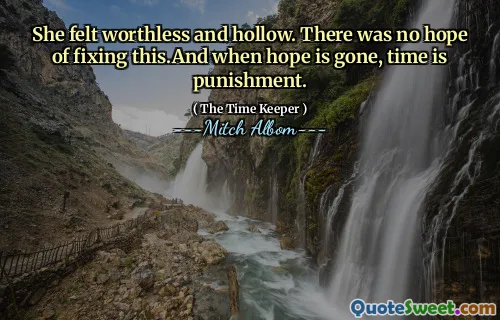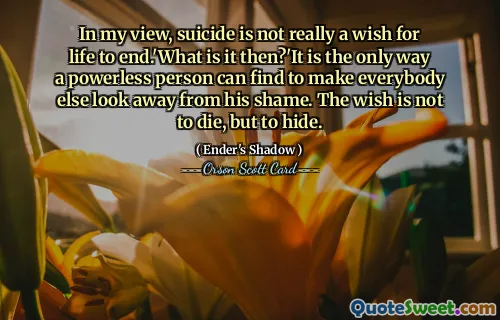
A middle-aged woman who looked like someone's cleaning lady, a shrieking adolescent lunatic and a talk show host with an orange face... It didn't add up. Suicide wasn't invented for people like this. It was invented for people like Virginia Woolf and Nick Drake. And Me. Suicide was supposed to be cool.
This quote offers a raw, unfiltered exploration of despair and the often contrasting perceptions of those contemplating suicide. The speaker recognizes the stark differences between societal stereotypes—such as the middle-aged woman, the unruly teenager, or the flamboyant talk show host—and the internal pain that leads someone to consider ending their life. The mention of Virginia Woolf and Nick Drake highlights historical and cultural figures who embodied profound struggles that have become romanticized or misunderstood over time. By stating, "Suicide was supposed to be cool," the speaker challenges conventional notions of heroism and rebellion associated with despair, suggesting instead that such feelings are complex, often misunderstood, and even stigmatized when they appear in everyday, seemingly 'ordinary' individuals. The quote subtly questions our tendency to romanticize or fetishize suicide when it is associated with artistic genius or tragedy, but fails to recognize the silent, often unnoticed suffering of regular people who feel trapped by their circumstances or mental anguish. It evokes a sense of frustration and alienation, highlighting how societal expectations might dismiss or trivialize personal pain until it becomes a tragic spectacle. Overall, it prompts reflection on mental health, societal perceptions of suffering, and the importance of compassion and understanding for those who struggle silently within their daily lives.


